Input interpretation

ethylbenzene
Chemical names and formulas

formula | C_6H_5C_2H_5 Hill formula | C_8H_10 name | ethylbenzene alternate names | benzene, ethyl- | Eb | ethylbenzol | phenylethane mass fractions | C (carbon) 90.5% | H (hydrogen) 9.49%
Lewis structure
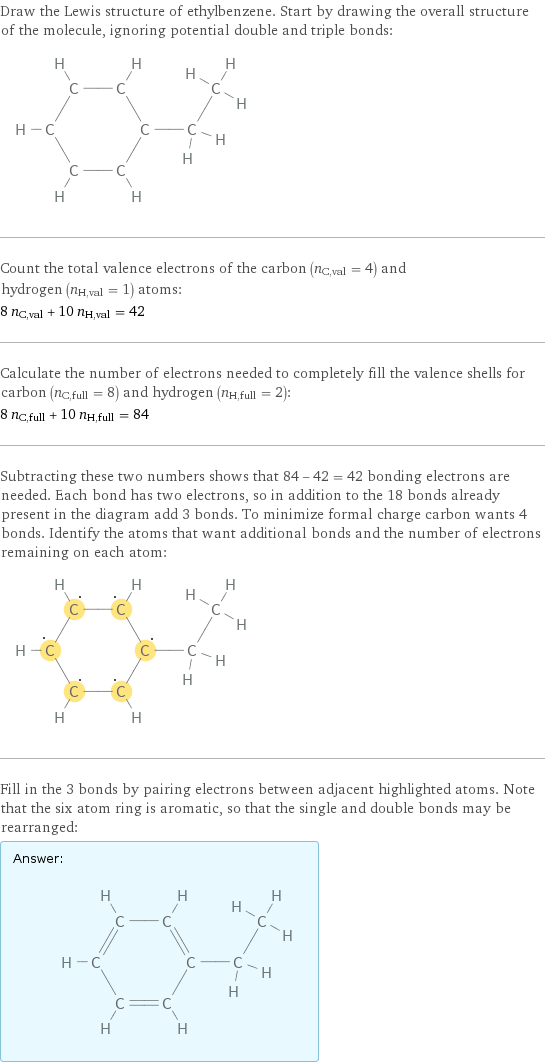
Draw the Lewis structure of ethylbenzene. Start by drawing the overall structure of the molecule, ignoring potential double and triple bonds: Count the total valence electrons of the carbon (n_C, val = 4) and hydrogen (n_H, val = 1) atoms: 8 n_C, val + 10 n_H, val = 42 Calculate the number of electrons needed to completely fill the valence shells for carbon (n_C, full = 8) and hydrogen (n_H, full = 2): 8 n_C, full + 10 n_H, full = 84 Subtracting these two numbers shows that 84 - 42 = 42 bonding electrons are needed. Each bond has two electrons, so in addition to the 18 bonds already present in the diagram add 3 bonds. To minimize formal charge carbon wants 4 bonds. Identify the atoms that want additional bonds and the number of electrons remaining on each atom: Fill in the 3 bonds by pairing electrons between adjacent highlighted atoms. Note that the six atom ring is aromatic, so that the single and double bonds may be rearranged: Answer: | |
3D structure
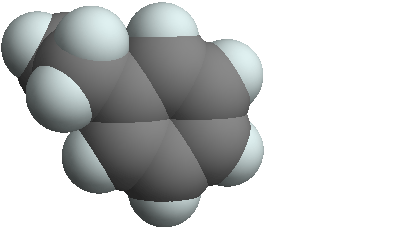
3D structure
Basic properties
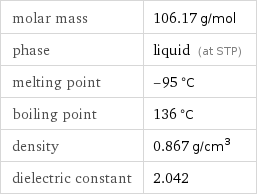
molar mass | 106.17 g/mol phase | liquid (at STP) melting point | -95 °C boiling point | 136 °C density | 0.867 g/cm^3 dielectric constant | 2.042
Liquid properties (at STP)
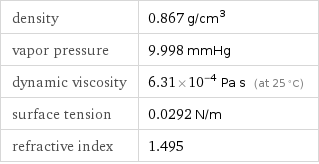
density | 0.867 g/cm^3 vapor pressure | 9.998 mmHg dynamic viscosity | 6.31×10^-4 Pa s (at 25 °C) surface tension | 0.0292 N/m refractive index | 1.495
Units

Thermodynamic properties
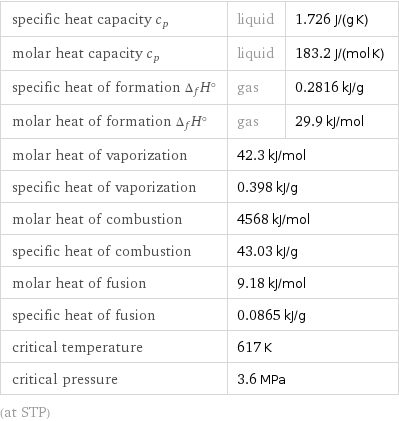
specific heat capacity c_p | liquid | 1.726 J/(g K) molar heat capacity c_p | liquid | 183.2 J/(mol K) specific heat of formation Δ_fH° | gas | 0.2816 kJ/g molar heat of formation Δ_fH° | gas | 29.9 kJ/mol molar heat of vaporization | 42.3 kJ/mol | specific heat of vaporization | 0.398 kJ/g | molar heat of combustion | 4568 kJ/mol | specific heat of combustion | 43.03 kJ/g | molar heat of fusion | 9.18 kJ/mol | specific heat of fusion | 0.0865 kJ/g | critical temperature | 617 K | critical pressure | 3.6 MPa | (at STP)
Basic drug properties

approval status | experimental | small molecule
Hydrophobicity and permeability properties
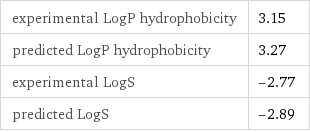
experimental LogP hydrophobicity | 3.15 predicted LogP hydrophobicity | 3.27 experimental LogS | -2.77 predicted LogS | -2.89
Chemical identifiers
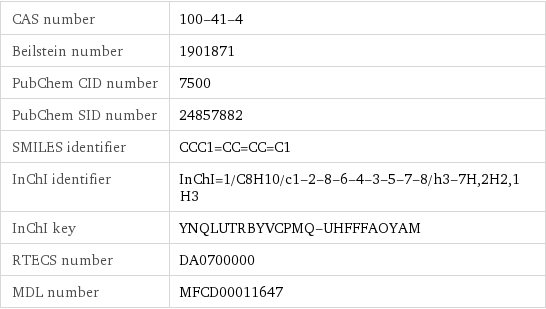
CAS number | 100-41-4 Beilstein number | 1901871 PubChem CID number | 7500 PubChem SID number | 24857882 SMILES identifier | CCC1=CC=CC=C1 InChI identifier | InChI=1/C8H10/c1-2-8-6-4-3-5-7-8/h3-7H, 2H2, 1H3 InChI key | YNQLUTRBYVCPMQ-UHFFFAOYAM RTECS number | DA0700000 MDL number | MFCD00011647
NFPA label

NFPA label
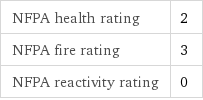
NFPA health rating | 2 NFPA fire rating | 3 NFPA reactivity rating | 0
Safety properties
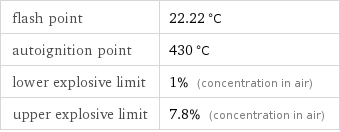
flash point | 22.22 °C autoignition point | 430 °C lower explosive limit | 1% (concentration in air) upper explosive limit | 7.8% (concentration in air)

DOT hazard class | 3 DOT numbers | 1175